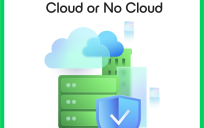One of the most pivotal decisions that government IT administrators can make today is whether or not they move their agency to the cloud. They can choose to stick with their old technology – which is often built on top of on-premise servers and is at the mercy of any bad actors the department firewall allows to get into the agency’s technology perimeter – or they can make the jump to the cloud. While the implementation of cloud technology has widespread effects across agency operations, one critical repercussion to consider is the way that cloud technology inherently changes the role of the IT administrator itself.
Take, for example, just a few of the items that will no longer be a Chief Information Officer (CIO) or head administrator’s responsibility:
- Server maintenance: No more on-premise hardware clearly means that there are no more clunky servers to maintain. Instead, cloud providers offer enormous suites of tools to manage this infrastructure from afar, all while bolstering security and reducing cost.
- Managing people: Servers require maintenance, which means they require people to maintain them. Often this falls in the hands of a specialized role in the department. More cloud infrastructure means fewer people-management costs and less time required of the CIO to manage those people.
- Budget: Put simply, on-premise hardware is expensive. It’s unpredictable and often custom built to each agency. Cloud providers, on the other hand, can build huge blocks of infrastructure for thousands of companies to use, which means those companies benefit directly from economies of scale in the form of cheap hosting costs. More cloud presence means more budget to use elsewhere.
- Security: Amazon, Microsoft and Google will always have more money and more people to throw at infrastructure security than any government agency could ever hope for. If agencies can get comfortable with making the jump to the cloud, they should know that while the servers aren’t exactly next door, their servers are maintained by security professionals with mountains of expertise and a lot to lose. In other words, the lack of direct access is made up for with far better security.
A 2015 survey of 1,500 cloud IT administrators of quick cloud-adopting organizations reported spending on average 25 percent less time on mundane tasks just because they adopted the cloud. Managing hardware is often a reactive process – deal with this error, figure out why this process is slow. Instead, IT should be a strategic, forward-looking arm of an agency. IT administrators should be proactively solving problems and making sure the agency has a strong tech practice backing up their mission.
Ultimately, the role of the CIO is changing. As stated in the 2011 Gartner CIO Agenda Survey report, “the skill profiles for the new IT will, in many cases, be a hybrid of business and IT skills.” Therefore, the complete IT professional is somebody that can understand business objectives and use their command of IT to solve those problems in a manner that is efficient and effective. The cloud enables them to deftly wield those IT skills with more prowess and dexterity than on-premise solutions could afford.
Matthew Polega is part of the GovLoop Featured Blogger program, where we feature blog posts by government voices from all across the country (and world!). To see more Featured Blogger posts, click here.





I think this posts speaks more to Software as a Service (SaaS) than cloud per say. An agency can stand up it’s own infrastructure in the cloud and still have to deal with security, people, and maintenance. The promise of SAAS is the four points made above are no longer a concern. Well three, budget is a whole other story.
Two main points I look at when looking to move to a SaaS model are visibility of environment and access to data.
Visibility of environment
Inevitably, the SaaS product will go down outside of maintenance window. How am I the IT department notified? Am I notified by users and then have to go to a system page with minimal information on it? Is there the ability to proactively monitor? The more insight I have to what is going on the better I can serve my users. There is something satisfying standing over a network admins shoulder as they troubleshoot, that is lost in SaaS.
Access to data
On-prem systems usually offer direct access to the database in which your developer has spent countless hours building reports or scripts to support your environment, extracting data or bulk uploading data. Most SaaS products enable access to an API which grants to access to the data. The tools around that usually is very limited, if they exist at all. If they don’t existent you as the IT department need to rebuild those tools to be able to support and this requires possibly a different or updated skill set from your developers.
The future is not doubt SaaS and cloud based solutions. There are efficiencies gained. As an IT department you must look at supporting its users and does the SaaS product have the tools to help you succeed.